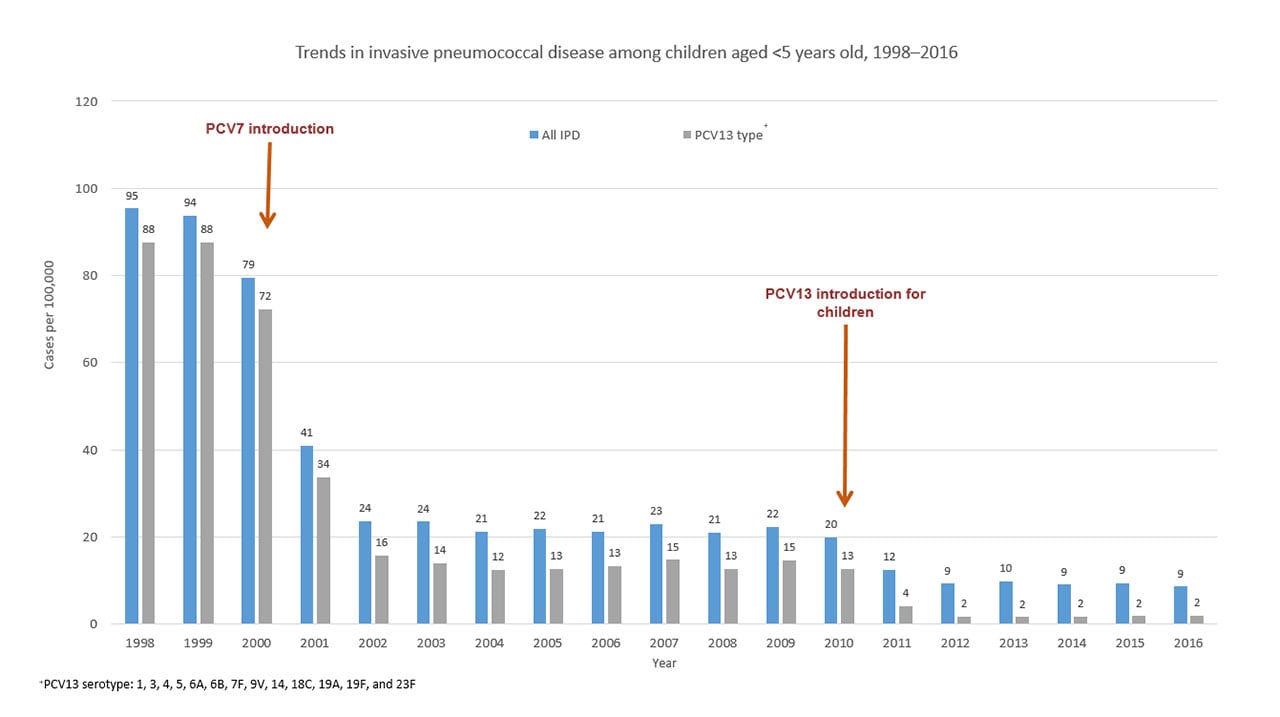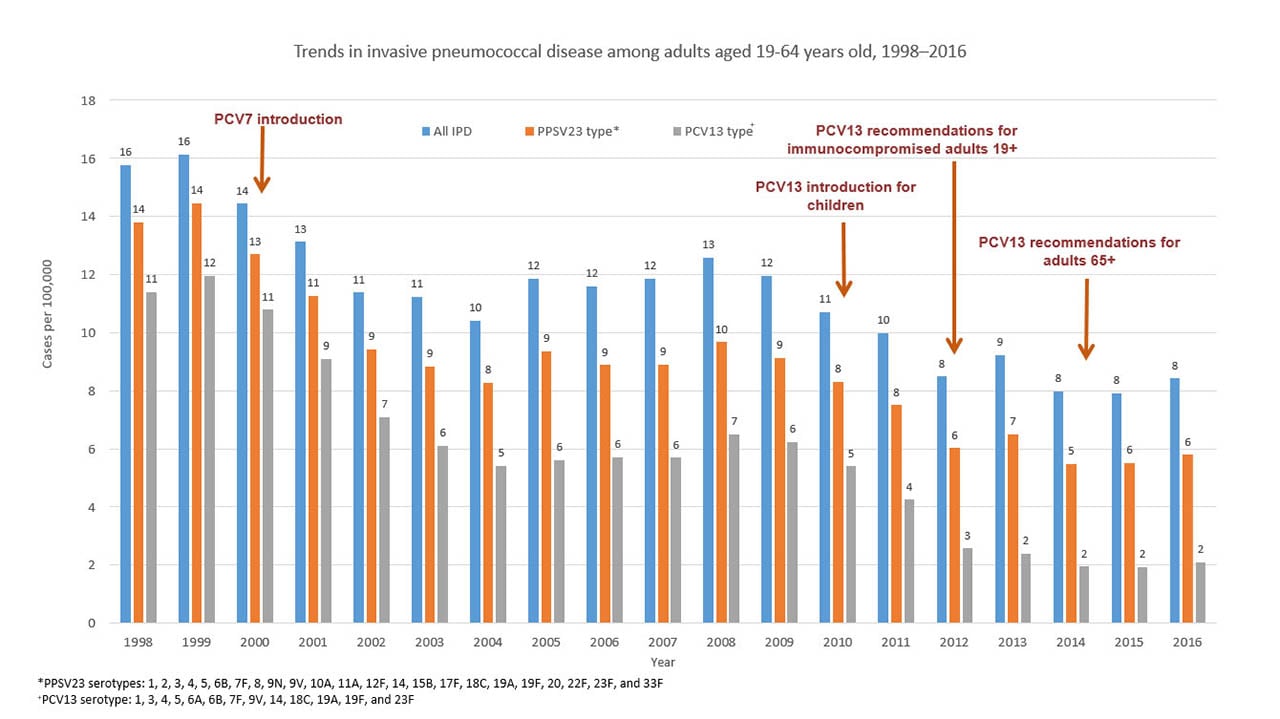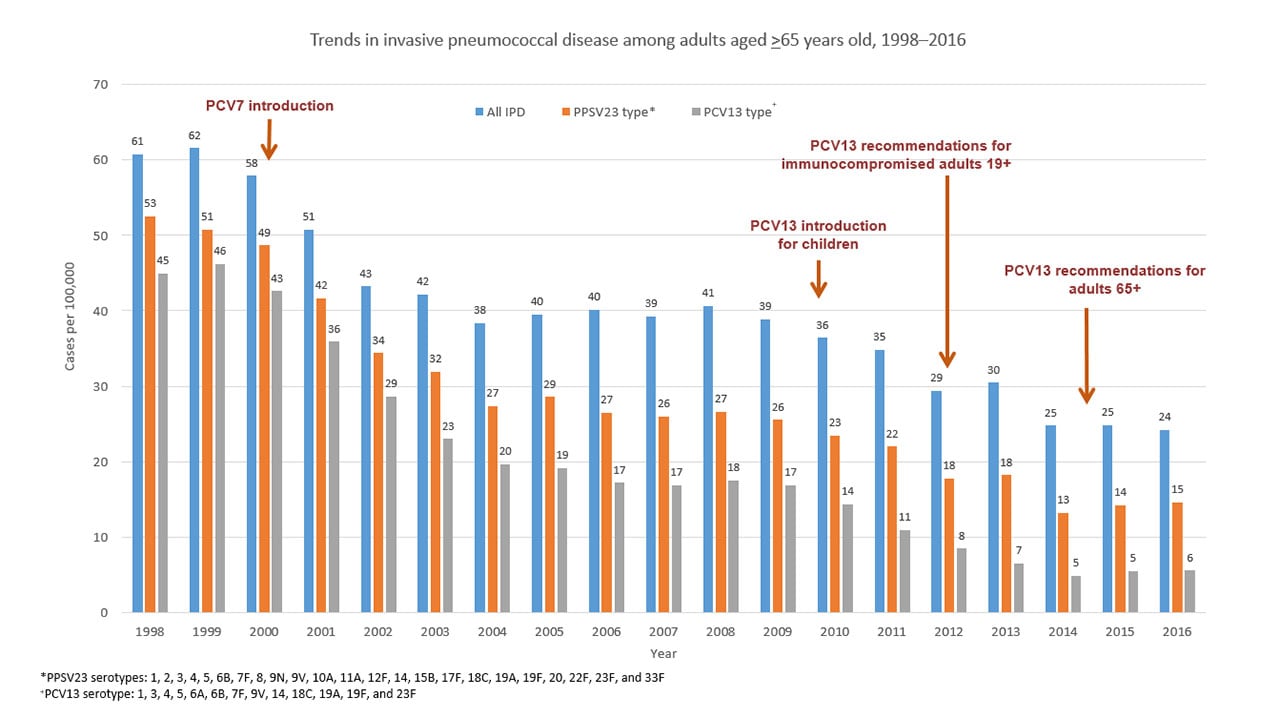Trends by Serotype Group
The following figures use data from CDC’s Active Bacterial Core surveillance (ABCs). View annual ABCs pneumococcal surveillance reports.
Figure 1.

Figure 1 shows changes in the incidence of invasive pneumococcal disease (IPD) among children <5 years old from 1998 through 2015 in the United States. Rates of IPD expressed as cases per 100,000 population are shown on the y-axis, and calendar year of surveillance on the x-axis. Blue bars represent overall IPD incidence, while the grey bars represent IPD incidence caused by serotypes included in the 13-valent pneumococcal conjugate vaccine (PCV13). Pneumococcal 7-valent conjugate vaccine (PCV7), containing serotypes 4, 6B, 9V, 14, 18C, 19F, and 23F, was introduced for use among children <5 years old in 2000. PCV13, containing serotypes 1, 3, 4, 5, 6A, 6B, 7F, 9V, 14, 18C, 19A, 19F, and 23F, was introduced for use among children <5 years old in 2010. The overall IPD incidence declined from 100 cases per 100,000 in 1998 to 9 cases per 100,000 in 2015; IPD caused by PCV13 serotypes declined from 91 cases per 100,000 in 1998 to 2 cases per 100,000 in 2015.
Figure 2.

Figure 2 shows changes in the incidence of invasive pneumococcal disease (IPD) among adults 19 through 64 years of age from 1998 through 2015 in the Unites States. Rates of IPD expressed as cases per 100,000 population are shown on the y-axis, and calendar year of surveillance on the x-axis. Blue bars represent overall IPD incidence, orange bars represent IPD incidence caused by serotypes included in the 23-valent pneumococcal polysaccharide vaccine (PPSV23), while the grey bars represent IPD incidence caused by serotypes included in the 13-valent pneumococcal conjugate vaccine. PPSV23, containing serotypes 1, 2, 3, 4, 5, 6B, 7F, 8, 9N, 9V, 10A, 11A, 12F, 14, 15B, 17F, 18C, 19A, 19F, 20, 22F, 23F, and 33F, has been available since 1984 and recommended for all adults 65 years or older and for people 2 years or older with chronic medical conditions. Pneumococcal 7-valent conjugate vaccine (PCV7), containing serotypes 4, 6B, 9V, 14, 18C, 19F, and 23F, was introduced for use among children
Figure 3.

Figure 3 shows changes in the incidence of invasive pneumococcal disease (IPD) among adults 65 years or older from 1998 through 2015 in the Unites States. Rates of IPD expressed as cases per 100,000 population are shown on the y-axis, and calendar year of surveillance on the x-axis. Blue bars represent overall IPD incidence, orange bars represent IPD incidence caused by serotypes included in 23-valent pneumococcal polysaccharide vaccine (PPSV23), while the grey bars represent IPD incidence caused by serotypes included in the 13-valent pneumococcal conjugate vaccine (PCV13). PPSV23, containing serotypes 1, 2, 3, 4, 5, 6B, 7F, 8, 9N, 9V, 10A, 11A, 12F, 14, 15B, 17F, 18C, 19A, 19F, 20, 22F, 23F, and 33F, has been available since 1984 and recommended for all adults 65 years or older and for people 2 years or older with chronic medical conditions. Pneumococcal 7-valent conjugate vaccine (PCV7), containing serotypes 4, 6B, 9V, 14, 18C, 19F, and 23F, was introduced for use among children